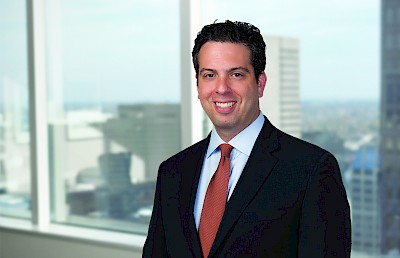Dividend Recaps: Potential Risks for Private Equity Firms and Their Insurers
Bailey Cavalieri’s own Elan Kandel and James Talbert in collaboration with Sarah Abrams of Bowhead Specialty Underwriters, Inc., have co-authored an insightful piece on dividend recapitalization for the D&O Diary with Kevin M. LaCroix, attorney and Executive Vice President, RT ProExec.
Introduction
Since the early 2000s, dividend recapitalization (also known as a dividend recap, leveraged dividend, or debt-backed dividend) has emerged as an important tool for the private equity industry and leveraged buyout firms, in particular. The technique enables private equity funds to leverage liquidity out of portfolio companies without executing a sale or IPO. And while the number of dividend recaps fell dramatically when interest rates rose in 2022, they appear to be making a marked resurgence in 2023.[i] Given the recent uptick in these transactions, this article examines the risks and exposures associated with dividend recaps.
Dividend Recaps: A Primer
Traditional dividends are voluntary corporate distributions, whereby “[a] portion of a company’s earnings or profits are distributed pro rata to its shareholders, usually in the form of cash or additional shares.”[ii] Like traditional dividends, dividend recaps involve a voluntary cash payment by a company to one or more classes of shareholders, but unlike traditional dividends, which are typically funded by withheld earnings, dividend recaps are funded by debt—often a bank loan obtained for the express purpose of issuing the dividend.
Dividend recaps are also distinctive for their close association with the private equity industry. Private equity firms frequently use them to extract cash from portfolio companies without sacrificing equity. The resulting cash distributions are useful for rewarding fund investors and enhancing the private equity firm’s track record.[iii] Dividend recaps are particularly useful to private equity firms in circumstances where the traditional methods for liquidating an investment—namely, M&A transactions and public offerings—are undesirable based on market conditions or other factors.[iv] Indeed, the flexibility that dividend recaps offer is a significant selling point. As one commentor recently put it, “[b]uyout firms love the technique because it lets them collect some profit before they are ready to sell a company, essentially cashing in some chips before a bet pays off, or doesn’t.”[v] Additionally, by putting cash back into investors’ hands quickly, dividend recaps can make it easier for a private equity firm to raise capital for new funds. It is also not uncommon for dividend recaps to be limited to particular classes of preferred stock.[vi]
Taking a step back, dividend recaps arguably serve a useful role in the economy at large by facilitating private investments that otherwise would not be feasible. For instance, when interest rates are high, a buyout fund may invest more of its own funds toward an acquisition based on the expectation it can execute a dividend recap when interest rates fall and thereby re-adjust the company’s debt level to one more typical of leveraged buyouts.[vii] On the other hand, critics paint dividend recaps as risky and inequitable since they benefit private equity investors while burdening the portfolio company, its stockholders, lenders, and employees. Critics also point out that credit ratings agencies often downgrade portfolio companies after a debt-financed dividend is issued,[viii] and that dividend recaps have played a critical role in several high-profile bankruptcies since they were popularized in the early 2000s.[ix]
Historic and Current Trends
As one might expect with any debt-backed transaction, dividend recaps are more popular when interest rates are low. Accordingly, the number of dividend recaps fell precipitously in 2022, following the Fed’s decision to raise interest rates to decades-high levels to combat inflation.
However, dividend recaps appear to be occurring with increasing frequency in 2023. This is something of an anomaly, given the persistently high interest rates. The resurgence may be attributable to other market forces, including competition in the private equity industry and associated pressures to return money to investors. Additionally, the current high interest rates have also dampened IPO and M&A activity, so the bounce back in dividend recaps may be due in part to the fact that there are few alternatives for private equity funds to return cash to investors.
Litigation Risk Posed by Dividend Recapitalizations
Dividend recaps can spawn direct or derivative shareholder actions or, where the portfolio company declares bankruptcy in the wake of a dividend recap, adversary proceedings. Where the contested dividend recap was driven by private equity investors (as is typically the case), the resulting lawsuit will often name the portfolio company’s private equity investors, including the management entity and any implicated funds. Suits arising from dividend recaps may also name the portfolio company itself and any directors and officers who are alleged to have played a role in planning or authorizing the dividend recap.
Suits arising from dividend recaps are often premised on allegations that the private equity investors and other defendants saddled the portfolio company with costly debt for their own personal gain, without achieving any corresponding benefit to the company or its other stakeholders. Notably, in the current high interest rate climate, with a plethora of private credit sources, if a choice to pay private equity investors and/or management is made over keeping a portfolio company solvent, liability against the individuals who allowed the incurred debt is strengthened.
Insurance Coverage Issues Involving Dividend Recap-Related Claims
Turning to the intersection of insurance coverage and dividend recaps, as noted above, the implications of dividend recaps are most often addressed in the bankruptcy context and specifically, adversary proceedings. A common cause of action in such proceedings asserts fraudulent transfer often under state law and Section 548 of the Bankruptcy Code.
The relief associated with fraudulent transfer claims, namely disgorgement, is a perennial subject of insurance coverage disputes. Insurers may argue that disgorgement is uninsurable on public policy grounds and that the policyholder has not incurred covered “loss” or “damages,” as defined in the policy, when the insured is merely returning monies that it obtained improperly in the first instance. In response, policyholders have argued (with varying degrees of success from state to state) that public policy concerns are the properly left to the legislative branch.
Even so, the (often costly) defense of the Board and Director and Officers of the bankrupt portfolio company becomes a dollar one insurable risk under Side A coverage. This coverage provides insurance when the entity cannot indemnify its executives as the result of insolvency.
Conclusion
Given the current uptick in dividend recaps coupled with the stark increase in portfolio company bankruptcies this year, private equity policyholders and their insurers alike are advised to discuss their investment strategies during the underwriting process, so that policyholders and their insurers may collectively anticipate the potential risks and exposures ahead of them.[x]
[i] Chris Cummings, Private Equity Firms Return—Tentatively—to Debt-Fueled Payouts, Wall Street Journal (Aug. 18, 2023), available at https://www.wsj.com/articles/private-equity-firms-returntentativelyto-debt-fueled-payouts-e1b1f61d (noting that the first eight months of 2023 saw a 71% increase in dividend recapitalizations compared to the same period in 2022).
[ii] Black’s Law Dictionary (11th ed. 2019),
[iii] Ryan Clements, ARTICLE: Misaligned Incentives in Markets: Envisioning Finance That Benefits All of Society, 19 DePaul Bus. & Comm. L.J. 1, 22 (Fall 2021) (describing dividend recapitalizations as “an increasingly prominent part of a modern day PE company’s ‘playbook.’”)
[iv] See Victor Okoth & Chris Volta, The Pros and Cons of Dividend Recapitalization, Capital Eyes (Bank of America, Charlotte, N.C.), Sept.-Oct. 2006, (“The desire to return capital to the limited partners has been one of the primary drivers of the dividend recap trend over the last few years.”).
[v] Chris Cummings, For Some Companies, Debt Downgrades Followed Payouts to Private-Equity Owners, Wall Street Journal (June 11, 2023), available at https://www.wsj.com/articles/for-some-companies-debt-downgrades-followed-payouts-to-private-equity-owners-e9cde86?page=1.
[vi] Irina Fox, Article: Protecting All Corporate Stakeholders: Fraudulent Transfer Law as a Check on Corporate Distributions, 44 Del. J. Corp. L. 81, 99 (2020), citing Dividend Recapitalizations: Cash Alternatives for Private Equity, CLEAR RIDGE CAP. (last visited Sept. 15, 2023), http://www.clearridgecapital.com/articles/dividend-recapitalizations-cash-alternatives-for-private-equity/.
[vii] See Ryan Dezember & Matt Wirz, Debt Fuels a Dividend Boom, WALL ST. J., October 19, 2012, available at http://online.wsj.com/article/SB10000872396390444592704578064672995070116.html (summarizing a Carlyle Group spokesman’s justification for using dividend recaps).
[viii] Irina Fox, “Article: Protecting All Corporate Stakeholders: Fraudulent Transfer Law as a Check on Corporate Distributions,” 44 Del. J. Corp. L. 81, 101, 108 (2020) (hereafter “Fox”) (“Moody’s Investors Service usually downgrades companies after debt-funded dividends are paid, recognizing the negative impact on a company’s financial performance.”).
[ix] See Ryan Dezember & Matt Wirz, Debt Fuels a Dividend Boom, WALL ST. J., October 19, 2012, available at http://online.wsj.com/article/SB10000872396390444592704578064672995070116.html.
[x] See Bankruptcies Among Private Equity Portfolio Companies on Track for 13-Year High (last visited September 26, 2023) available at https://www.spglobal.com/marketintelligence/en/news-insights/latest-news-headlines/bankruptcies-among-private-equity-portfolio-companies-on-track-for-13-year-high-76865450 (noting that “At the current pace, bankruptcies by private equity portfolio companies are on track to total 108 by the end of 2023, a number that would exceed the 2020 total of 95 such bankruptcies and would be the highest since at least 2010.”)



